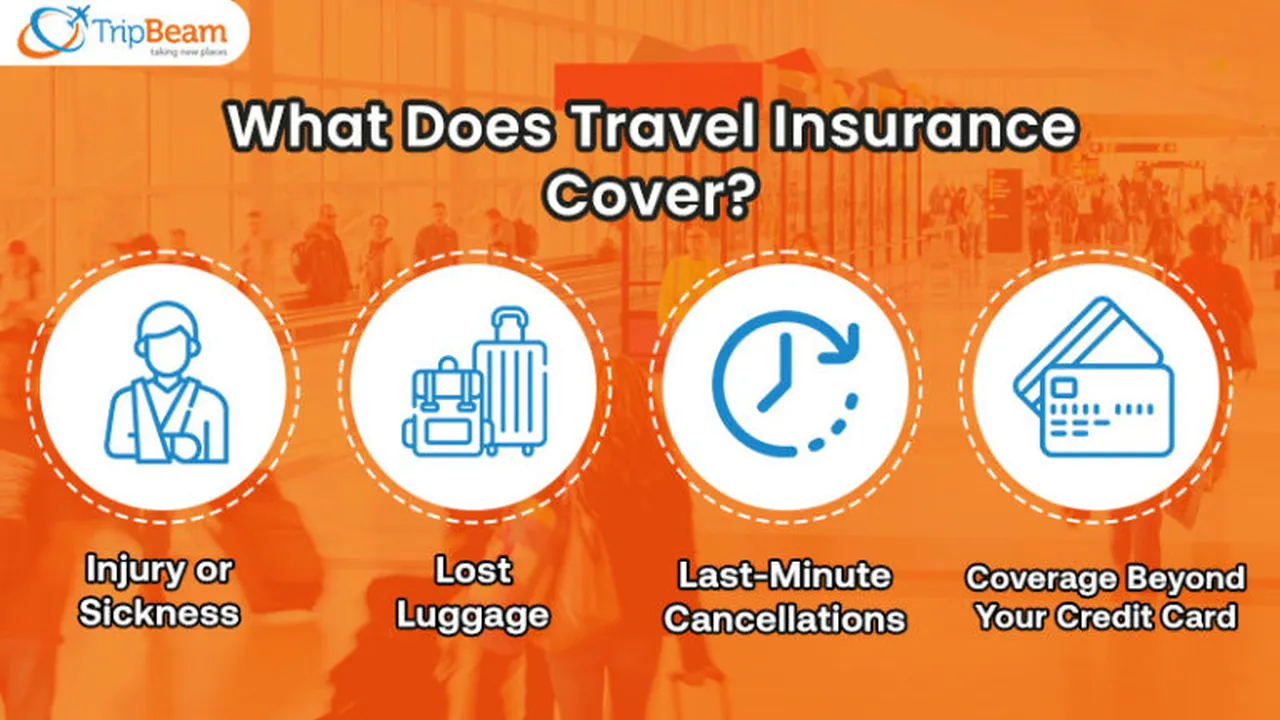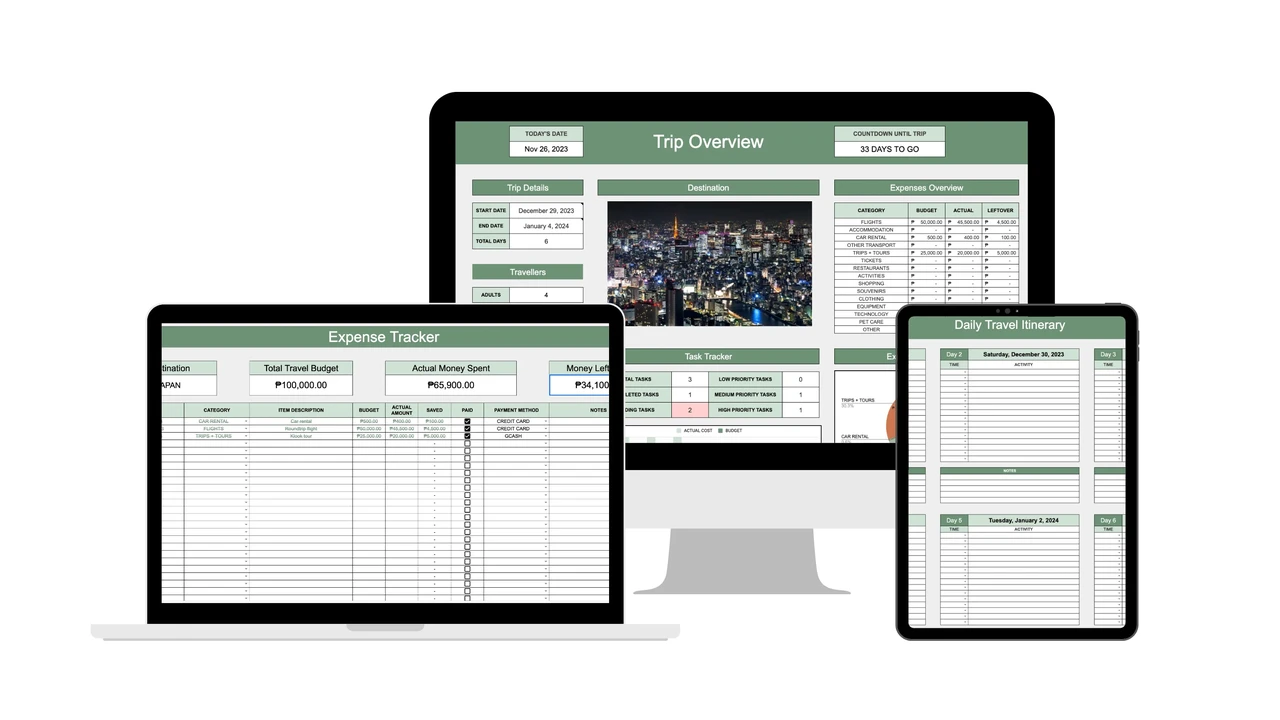Leveraging Data Analytics for Travel Policy Savings
{ "article": [ { "title": "Leveraging Data Analytics for Travel Policy Savings", "meta_description": "How to use travel data and analytics to identify spending patterns and uncover opportunities for cost reduction.", "content": "How to use travel data and analytics to identify spending patterns and uncover opportunities for cost reduction.\n\n

Hey there, business leaders and finance gurus! Ever feel like your company's travel budget is a bit of a black hole? You know, money goes in, but you're not entirely sure where it all ends up or if you're getting the best bang for your buck? Well, you're not alone. Managing corporate travel expenses can be a real headache, especially without clear visibility into spending habits. That's where data analytics swoops in like a superhero, ready to shed light on your travel policy's effectiveness and uncover some serious savings opportunities.
\n\nThink about it: every flight booked, every hotel stay, every meal expensed – it all generates data. And in today's world, data is gold. By properly collecting, analyzing, and interpreting this travel data, you can transform your travel policy from a static rulebook into a dynamic, cost-saving machine. We're talking about moving beyond just enforcing limits to proactively identifying trends, predicting future costs, and optimizing every single travel dollar.
\n\nSo, let's dive deep into how you can harness the power of data analytics to make your travel policy not just compliant, but truly cost-efficient. We'll explore the types of data you should be looking at, the tools that can help you make sense of it all, and real-world strategies to turn insights into savings.
\n\nUnderstanding Your Travel Data Landscape What to Track
\n\nBefore you can start saving, you need to know what you're dealing with. It's not just about the total spend; it's about the 'who, what, when, where, and why' of your travel. Here are the key data points you should be tracking:
\n\nTravel Spend Categories Breaking Down Expenses
\nThis is your foundational data. You need to categorize every expense. Think flights, hotels, ground transportation (taxis, ride-shares, rental cars), meals, entertainment, and miscellaneous. Within each, you can go even deeper: economy vs. business class flights, specific hotel chains, car rental companies. The more granular, the better your insights will be.
\n\nTraveler Behavior Insights into Booking Habits
\nWho's traveling? How often? Are certain departments traveling more than others? Are employees booking last-minute flights, or are they planning ahead? Are they choosing preferred vendors? Understanding individual and departmental travel patterns can reveal compliance issues or areas for training.
\n\nVendor Performance Evaluating Supplier Deals
\nAre your preferred airlines and hotels actually giving you the best rates? Are there other vendors offering better value for similar services? Data can help you assess the performance of your current suppliers and inform future negotiations. Look at average ticket prices, hotel night rates, and even ancillary fees.
\n\nRoute and Destination Analysis Identifying High Cost Areas
\nWhich routes are most expensive? Are there specific cities or regions where travel costs consistently spike? This can help you identify opportunities for alternative travel methods (e.g., virtual meetings), or to negotiate better rates for frequently visited destinations.
\n\nAdvance Booking Trends The Power of Planning Ahead
\nThis is a big one for savings. Are your employees booking far enough in advance to secure lower fares? Data can clearly show the cost difference between booking 3 days out versus 3 weeks out. This insight can then be used to reinforce advance booking policies.
\n\nPolicy Compliance Metrics Adherence to Guidelines
\nAre employees sticking to the rules? Are they booking outside of preferred channels? Are they exceeding per diem limits? Data analytics can flag non-compliant spending, allowing you to address issues proactively and reinforce your policy.
\n\nTools for Travel Data Analytics Software Solutions Compared
\n\nYou can't just eyeball thousands of expense reports. You need dedicated tools. Here are some of the top contenders, ranging from integrated platforms to specialized analytics solutions:
\n\nIntegrated Travel and Expense Management Platforms All in One Solutions
\nThese are often the go-to for comprehensive travel management. They combine booking, expense reporting, and policy enforcement with robust analytics capabilities. They pull data directly from bookings and expense submissions, giving you a unified view.
\n\nSAP Concur
\n- Description: A market leader, Concur offers a full suite of travel and expense management tools. Its analytics module, Concur Intelligence, provides deep insights into spending patterns, vendor performance, and policy compliance.
- Use Case: Ideal for medium to large enterprises looking for an end-to-end solution that integrates seamlessly with ERP systems.
- Key Features: Customizable dashboards, drill-down reports, benchmarking, predictive analytics, mobile app for on-the-go expense capture.
- Pros: Comprehensive features, strong integration capabilities, widely adopted, good for global operations.
- Cons: Can be complex to set up, pricing can be higher for smaller businesses, some users find the interface less intuitive.
- Estimated Pricing: Varies significantly based on company size and modules. Typically subscription-based, starting from a few dollars per user per month for basic plans, scaling up to hundreds for enterprise solutions. Contact sales for a custom quote.
TripActions (now Navan)
\n- Description: Known for its user-friendly interface and focus on traveler experience, TripActions (now Navan) also boasts powerful analytics. It uses AI to personalize booking options and provides real-time data on spend and savings.
- Use Case: Great for companies prioritizing both cost savings and employee satisfaction, especially those with frequent travelers.
- Key Features: Real-time spend dashboards, personalized insights, carbon footprint tracking, AI-driven recommendations, integrated booking and expense.
- Pros: Excellent user experience, strong real-time data, good for policy enforcement, proactive savings suggestions.
- Cons: May be more expensive than some basic solutions, best suited for companies with a significant travel volume.
- Estimated Pricing: Subscription-based, often tiered by number of active travelers. Expect custom quotes, but generally competitive with Concur for similar feature sets.
Expensify
\n- Description: While primarily an expense management tool, Expensify offers robust reporting and analytics features that can be leveraged for travel spend. It's particularly strong in receipt capture and automated expense categorization.
- Use Case: Excellent for small to medium businesses or those looking for a strong expense reporting tool with good analytical capabilities, especially if travel booking is handled separately.
- Key Features: SmartScan for receipts, automated expense reports, policy enforcement, basic reporting dashboards, integrations with accounting software.
- Pros: Very easy to use, excellent mobile app, quick setup, affordable for smaller teams.
- Cons: Less comprehensive travel booking features compared to dedicated T&E platforms, analytics are more focused on expense rather than travel booking patterns.
- Estimated Pricing: Free for individuals, paid plans start around $5-9 per active user per month for teams, scaling up for enterprise features.
Business Intelligence BI Tools for Deeper Analysis Custom Reporting
\nIf your existing travel management system's analytics aren't cutting it, or you want to combine travel data with other business data (e.g., sales performance, project profitability), a dedicated BI tool can be invaluable.
\n\nTableau
\n- Description: A leading BI and data visualization tool. You can connect Tableau to your travel data sources (e.g., CSV exports from your travel agency, data from your T&E platform) and create highly interactive and customizable dashboards.
- Use Case: For organizations with dedicated data analysts or those who need very specific, complex, or cross-departmental insights.
- Key Features: Drag-and-drop interface, wide range of data connectors, powerful visualizations, advanced analytics, collaborative features.
- Pros: Extremely flexible and powerful, can handle large datasets, beautiful and insightful visualizations.
- Cons: Steeper learning curve, can be expensive, requires data preparation skills.
- Estimated Pricing: Creator licenses start around $70 per user per month (billed annually). Viewer and Explorer licenses are cheaper.
Microsoft Power BI
\n- Description: Microsoft's answer to Tableau, Power BI offers robust data analysis and visualization capabilities, often integrating well with other Microsoft products.
- Use Case: Ideal for businesses already in the Microsoft ecosystem, or those looking for a powerful BI tool with a more accessible price point than some competitors.
- Key Features: Data modeling, interactive dashboards, natural language queries, integration with Excel and Azure, mobile apps.
- Pros: Cost-effective (especially with Office 365 subscriptions), strong integration with Microsoft products, large community support.
- Cons: Can be resource-intensive for very large datasets, some advanced features require coding knowledge.
- Estimated Pricing: Free desktop version. Pro version is $10 per user per month. Premium per user is $20 per user per month.
Strategies for Cost Reduction Turning Insights into Action
\n\nHaving the data is one thing; using it effectively is another. Here's how to translate your analytical insights into tangible savings:
\n\nIdentify Spending Anomalies and Outliers Flagging Unusual Expenses
\nYour data analytics tool should immediately flag expenses that fall outside of your policy or typical spending patterns. Is someone consistently booking more expensive hotels than their peers? Are there unexplained spikes in ground transportation costs for a particular project? Investigating these anomalies can uncover misuse, errors, or areas where policy clarification is needed.
\n\nOptimize Vendor Negotiations Leveraging Your Buying Power
\nArmed with data on your total spend with specific airlines, hotel chains, or car rental companies, you're in a much stronger negotiating position. You can show them exactly how much business you're giving them and demand better rates, perks, or service level agreements. For example, if your data shows you spend $500,000 annually with one airline, you have leverage for corporate discounts.
\n\nRefine Your Travel Policy Based on Real World Data Policy Evolution
\nYour travel policy shouldn't be set in stone. Data analytics provides the evidence you need to make informed adjustments. If you see that a certain per diem limit is consistently being exceeded, perhaps it's too low for that region. If employees are frequently booking non-preferred hotels because preferred ones are unavailable, you might need to expand your preferred vendor list. Use data to make your policy more realistic and effective.
\n\nPromote Advance Booking Incentivizing Early Planning
\nShow your employees the data! Create reports that clearly illustrate the cost savings associated with booking flights and hotels well in advance. You can even implement incentives or stricter policy enforcement for last-minute bookings if the data justifies it. For example, a policy might state that flights booked less than 7 days out require special approval, unless an emergency.
\n\nEncourage Preferred Vendor Usage Driving Compliance
\nIf your data shows low adoption of preferred vendors, it's time to investigate why. Is it a usability issue with the booking tool? Are the preferred options genuinely inconvenient or more expensive in certain scenarios? Use analytics to identify these roadblocks and then communicate the benefits of preferred vendors (e.g., better rates, loyalty points, added perks) to your travelers.
\n\nAnalyze Route and Destination Costs Strategic Travel Planning
\nIf a particular route is consistently expensive, explore alternatives. Could a train be more cost-effective than a flight for shorter distances? Could a virtual meeting replace a physical one? Data can help you make strategic decisions about where and how your employees travel, potentially reducing the need for costly trips altogether.
\n\nImplement Dynamic Policy Adjustments Responding to Market Changes
\nThe travel market is constantly changing. Fuel prices fluctuate, hotel demand shifts, and new airlines emerge. Your data analytics should allow you to monitor these trends and make dynamic adjustments to your policy. For instance, if average hotel rates in a key city drop, you might adjust your per diem or preferred hotel list accordingly.
\n\nBenchmark Your Spending Against Industry Peers Performance Comparison
\nMany advanced analytics tools or third-party consultants can provide benchmarking data. How does your per-trip cost compare to similar companies in your industry? Are you spending more on certain categories? Benchmarking helps you identify areas where you might be overspending and provides targets for improvement.
\n\nForecast Future Travel Spend Budgeting with Precision
\nBy analyzing historical data and identifying trends, you can create much more accurate forecasts for future travel spend. This allows for better budget allocation, reduces surprises, and helps you plan for peak travel seasons or major projects.
\n\nEducate Employees on Cost Saving Practices Empowering Travelers
\nShare your insights with your employees. When they understand the 'why' behind the policy – that their choices directly impact the company's bottom line – they're more likely to comply. Provide regular reports or dashboards that show overall company savings, or even individual/team compliance rates (anonymized, of course, to avoid singling anyone out).
\n\nChallenges and Considerations in Travel Data Analytics Overcoming Hurdles
\n\nIt's not all smooth sailing. There are a few bumps you might encounter on your data analytics journey:
\n\nData Silos and Integration Issues Connecting the Dots
\nOften, travel booking data, expense data, and HR data live in separate systems. Getting them to talk to each other can be a challenge. This is where integrated T&E platforms or robust BI tools with strong data connectors become crucial.
\n\nData Quality and Accuracy Garbage In Garbage Out
\nIf your data is incomplete, inconsistent, or inaccurate, your analysis will be flawed. Ensure proper data entry, automated receipt capture, and regular data cleansing processes are in place.
\n\nPrivacy and Security Concerns Protecting Sensitive Information
\nTravel data often includes personal information. You need to ensure compliance with data privacy regulations (like GDPR or CCPA) and implement strong security measures to protect sensitive employee and financial data.
\n\nLack of Analytical Expertise Building Your Team's Skills
\nNot everyone is a data scientist. You might need to invest in training for your finance or travel management team, or consider hiring someone with specific analytical skills to truly leverage your data.
\n\nResistance to Change Getting Buy In
\nEmployees might resist new policies or increased scrutiny. Clearly communicate the benefits of data-driven decisions – not just for the company, but also for creating a more efficient and fair travel program.
\n\nThe Future of Travel Data Analytics Predictive and Prescriptive Insights
\n\nThe field of travel data analytics is constantly evolving. We're moving beyond just understanding what happened (descriptive analytics) to predicting what will happen (predictive analytics) and even recommending what you should do (prescriptive analytics).
\n\nImagine a system that not only tells you that a flight route is getting more expensive but also suggests alternative airports, different travel dates, or even recommends a virtual meeting instead, all based on real-time data and your policy. That's the power of advanced AI and machine learning being applied to travel data.
\n\nBy embracing data analytics, you're not just cutting costs; you're building a smarter, more agile, and more responsive travel program. You're transforming your travel policy from a necessary evil into a strategic asset that drives efficiency, supports your employees, and ultimately, contributes to your company's bottom line. So, start digging into that data – your savings are waiting to be discovered!
" } ] }:max_bytes(150000):strip_icc()/277019-baked-pork-chops-with-cream-of-mushroom-soup-DDMFS-beauty-4x3-BG-7505-5762b731cf30447d9cbbbbbf387beafa.jpg)






